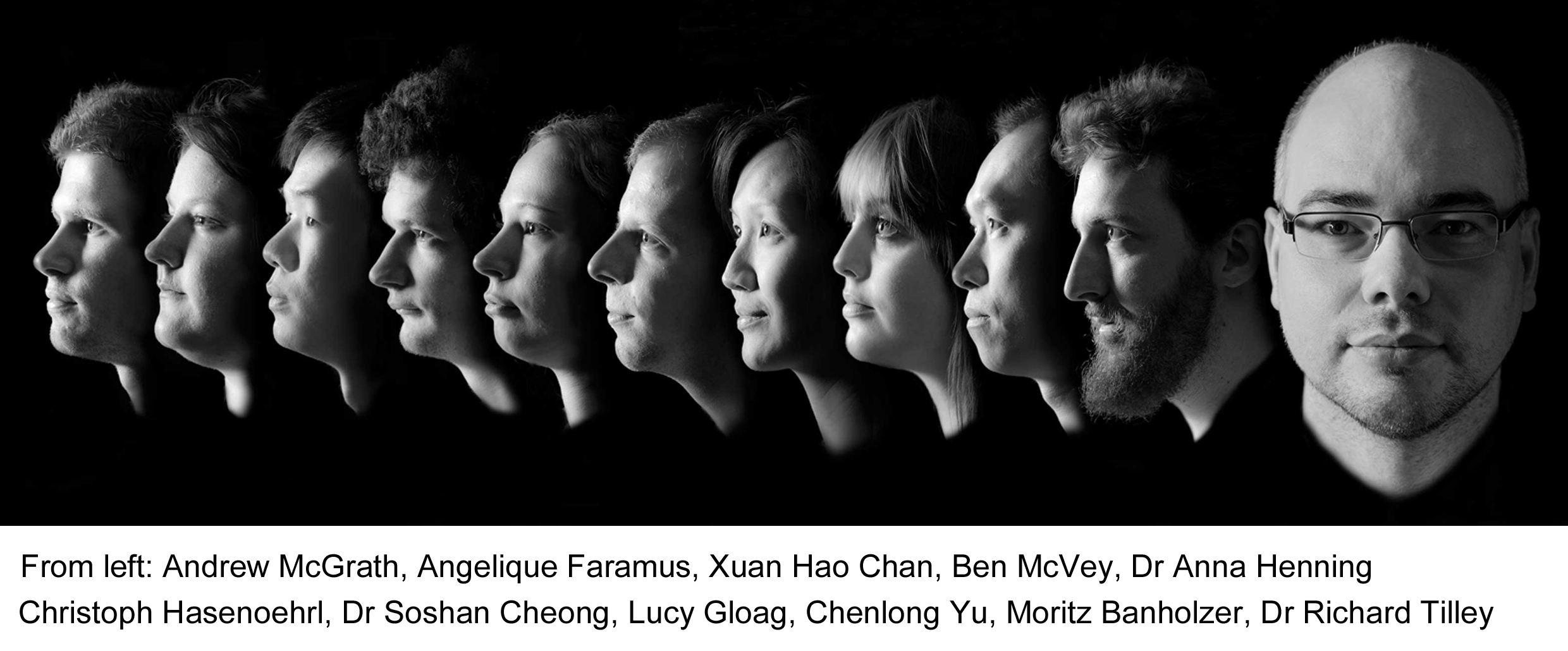Big results from tiny particles

Creating and manipulating particles made of just a few atoms is all in a day’s work for Dr Richard Tilley. Richard, an Associate Professor in Victoria's School of Chemical and Physical Sciences, leads the School’s nanoparticle and quantum dot research group.
Detecting and treating cancer tumours, finding sustainable energy solutions and creating new products for use in the pharmaceutical and automotive industries are just some of the applications the group is focusing on.
Since his arrival in 2003, Richard, who is also a principal investigator at the MacDiarmid Institute for Advanced Materials and Nanotechnology, has propelled Victoria’s nanoparticle research capability to the forefront of international efforts.
His research group is one of only a few in the world that can create nanoparticles of different sizes and shapes. Its work is supported by large public grants, and its findings are regularly published in the world’s top chemistry and nanotechnology research journals.
The group includes Master’s, PhD and postdoctoral researchers, collaborators from the MacDiarmid Institute, other New Zealand universities and research institutes, and a number of prestigious international researchers.
Nanoparticles are attracting worldwide scientific interest because of their potential applications, particularly in the fields of biomedical research and industrial processes.
Richard’s group uses solution phase chemistry techniques that involve growing small crystals in a liquid solution, then adding what are essentially soap molecules. These bind to the particle surfaces with different strengths. The researchers then carefully manipulate the size and shape, creating thousands of visually striking nanoparticles that react in new ways.
One area of success for the group is producing highly magnetic nanoparticles for use in biotechnology applications, such as detecting cancer tissue.
Together with Professor Ian Hermans from the Malaghan Institute of Medical Research, Dr Peter Ferguson at Wellington Public Hospital and researchers from the MacDiarmid Institute and Callaghan Innovation, the team developed a new form of iron metal nanoparticles that don’t rust.
The particles can be used as a contrast agent in magnetic resonance imaging (MRI) scans, highlighting the body’s internal structures and diagnosing health problems."As a result we have been able to improve performance by 100 percent and detect cancer tumours as small as two millimetres," says Richard.
Central to the group's research is Victoria’s multimillion-dollar electron microscope suite that houses scanning and transmission electron microscopes that are vital for examining nanomaterials. The transmission electron microscope, central to the work carried out by Richard’s team, allows them to see the size and shape of the particles they create, and to control the properties of the nanoparticles.
The microscope is used to examine ultra-thin samples, and has recently been upgraded. With higher resolution and a new digital camera, Richard and his team can now observe nanoparticles at the scale of 0.15 of a nanometre—that is about one billionth of a metre.
The scanning microscopes have also been improved. These microscopes use a beam of electrons to scan the surface of a sample, gaining information about its shape and composition. A recent addition is a cryoattachment, which rapidly freezes samples, locking their internal structures into solid form and allowing researchers to take images of softmaterials and fluids.
Richard says many students who have worked with the nanoparticles research group have gone on to prestigious postdoctoral positions and successful careers in national and international research institutes and commercial enterprises.
A current focus for the group, says Richard, is commercialisation of its nanoparticles. Together with PhD graduate Dr Anna Henning, he has launched an online company, Boutiq, to supply nanoparticles for international science and engineering clients. Richard plans to grow the business through Victoria’s commercialisation arm, Vic Link.
"I know how hard it is to actually create something that ends up being used by humanity but, at the same time, I can’t imagine ever doing research where I didn't think the outcome would be useful."
Article (edited from the original) courtesy of Victorious Spring 2013
For more information about the Nanoparticle and Quantum Dot Research Group, please visit their homepage.
